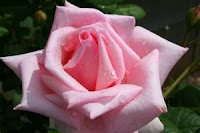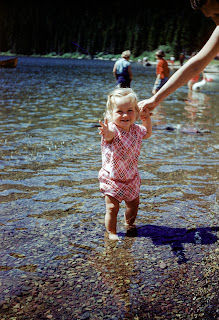On November 25, 1896 William John
Davies and Sarah Amanda Nowlin were united in marriage. They farmed in the
Shelton district in Idaho, their nearest town being Idaho Falls, Idaho. Mr. Davies was born in Wyoming in 1872 and
Mrs. Davies was born in Utah in 1878. Their
were five children born to them in Idaho, Janie, George, Ivan, Glenn and
Charlie.
In March 1908, Will decided to sell
his farm and come along to Canada along with several other families, brother and
sisters of Will and Sarah. In early
March all their belongings, such as machinery, household effects, livestock and,
yes, the family, were loaded onto a train and headed out for Canada.
However, upon arriving in Great
Falls, Montana, they found all their livestock had to go through inspection and
had to be put through disinfection, so there was a delay of several days.
All the women, with the children,
went to a hotel. There were five or six
women and somewhere around eighteen children in one hotel, so the children had
a hilarious time, lots of noise and excitement with lots of mad patrons in the
hotel.
One man was so mad because George
Davies and Leland Nowlin knocked on this door; he opened the door and said he
would kill them if they didn’t stop, so they went out on the street looking for
a policeman. While they were looking
they ran into Charles Nowlin’s family, who had left a few days later and were
looking for the group. They returned to the hotel with the boys.
In a few days however, it was
discovered that Charlie Davies, seven months and Harold Nowlin, four months,
had chicken pox. The babies were wrapped in their shawls, and all the women and
children left for Claresholm by train with Jabus Nowlin, as leader and
protector.
Upon arriving in Claresholm, the
group was met by a brother of Sarah and Ernest Nowlin, from Carmangay, so the
two men with the women and eighteen children marched from the station to the
Wilton Hotel, with all who were able, carrying bags, suitcases, etc. As we went
along the street, we heard people say, “There goes a bishop and his family”
William and Sarah moved onto a farm in the Starline district with their
five children and in 1910 Victor was added to the family and in 1916
Mary was born. Mary died in young childhood at the age of eleven and a
half.
William Davies bought and farmed several parcels of land in the Starline
district and was a very successful farmer from 1908 until his death in
1935. Sarah and sons Glenn and Charlie farmed a few years, then Sarah
moved to Claresholm, then on Christmas day in 1945 she passed away after
several years of failing health
Janie married Harry Taitinger, a son of Nick Taitinger. George married
Carrie McMurray of Cardston. Ivan married Rachel Lepard of Claresholm.
glen remained unmarried. Charlie was married to Zelpha Newby of
Lethbridge and victor married Mabel Johnson of Claresholm. There were
nineteen grandchildren.
 You
can find so much information on a visit to a cemetery. Some folks like
to plan their vacations around checking out cemeteries for birth and
death dates.
You
can find so much information on a visit to a cemetery. Some folks like
to plan their vacations around checking out cemeteries for birth and
death dates.

























